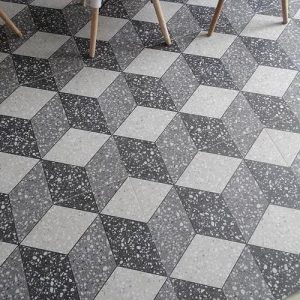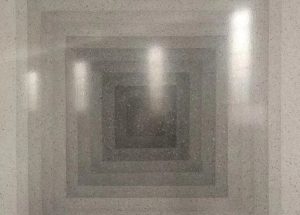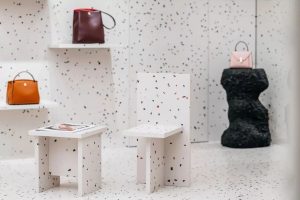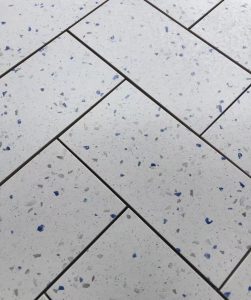A variety of terrazzo assemblies
According to different design requirements, spatial characteristics, and personal preferences, different types of terrazzo combinations can be selected. The following are some common terrazzo assembly styles for reference:
Traditional patterns:
Use terrazzo blocks of different colors and shapes to create traditional and geometric patterns, such as unique decorations on floors, walls, or corridors. This method is common in classical and nostalgic interior design.
Geometric collage:
It combines terrazzo blocks of different sizes and shapes to create various geometric patterns, such as hexagons, diamonds, stars, etc. This combination can add a sense of modernity and art, suitable for modern design in European style.

Gradient color:
Gradient terrazzo color is used for floors or walls, gradually changing from light to dark, creating a gradual visual effect and increasing the sense of spatial hierarchy.

Image collage:
Using different colored terrazzo blocks to form images or patterns, such as abstract art, animals and plants, to transform the ground or walls into unique artworks.
Edge and lace:
Use colored terrazzo or special shapes on the edges of floor or wall tiles to create a unique edge effect, similar to lace decoration.

Mosaic effect:
Small terrazzo is embedded between large floor or wall tiles, creating a dazzling decorative effect, somewhat like decorative tiles.
Terrazzo Carpet:
Create a terrazzo pattern similar to a floor carpet, combining stones of different colors and textures into a unique carpet effect.
stone decoration:
Use terrazzo blocks of different heights to create 3D effects, increasing spatial layering and dynamic effects.

Interleaved arrangement:
Interleaved arrangement of terrazzo blocks, forming intersecting geometric patterns, increasing visual changes and dynamics.

Random collage:
Randomly combine terrazzo blocks of different colors and shapes to create a natural and random decorative effect.
When choosing various terrazzo combinations, you can consider the size, purpose, decorative style, and personal aesthetic preferences of the space to create unique and unique decorative effects. It is best to preview the assembly effect through drawings, design software, or actual collage samples before actual construction to ensure that the expected effect is achieved.
发表回复